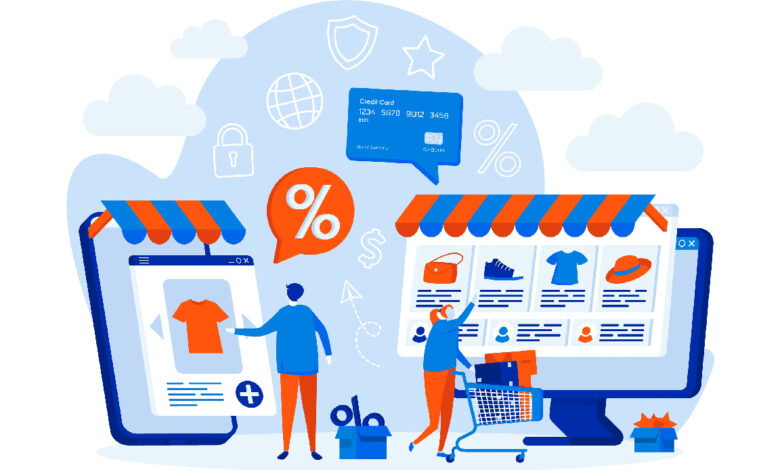The Role of Data in Optimizing Quick Commerce Advertising Campaigns

Quick commerce, or q-commerce, has transformed the way consumers buy goods. With minutes-guaranteed delivery, competition among platforms is intensifying. To stand out, brands require more than generic strategies. They must leverage data to maximise quick commerce advertising campaigns and get the most return on investment.
Understanding Quick Commerce Advertising
Unlike traditional e-commerce, where the purchase cycles are longer, speed commerce relies on impulsive decision-making. A person searching for milk, bread, or a drink on an app desires immediate results and delivery. Advertising is no longer about long-term persuasion, but rather about time-specific relevance.
Instant commerce sites usually offer recommended listings, banner ads, and sponsored listings. These placements are very competitive because visibility in the initial few results will directly impact sales. Lacking data-driven optimisation, advertising costs will most likely be wasted on impressions that won’t convert.
Why Data Matters
The rapid commerce aspect necessitates campaigns to transform and evolve continuously. Data provides brands with insight into how their products stand, how consumers interact with them, and the actions of rivals.
For example, an ad budget can generate hundreds of thousands of impressions, but with poor conversions, data can reveal the problems, such as low-quality images of products, uncompetitive prices, or a lack of stock. With such gaps known, brands can adjust not only ads but also their overall strategy.
Key Metrics in Quick Commerce Campaigns
Advertisers should look beyond the surface-level data to make the right decision. Some of the important ones are:
- Search share: Number of products in key searches compared to competition.
- Click-through rates (CTR): Whether ad placements are attracting enough attention.
- Conversion rates: Measuring how many clicks result in sales.
- Stock availability: Being aware of lost spend on products that can’t be filled.
- Customer sentiment: Scores and opinions influencing purchase.
Each of these variables has an interaction with ad outcomes. A high CTR but low conversion rate, for instance, might indicate that customers love the visibility but are put off by prices or reviews.
Role of Quick Commerce Software
Data interpretation and collection at scale require sophisticated tools. That is where quick commerce software comes in. The software helps brands track product visibility, monitor competition, and measure campaign performance in real-time.
By integrating with retail media platforms, software for quick commerce allows marketers to analyse performance and make agile adjustments rapidly. Instead of waiting weeks for campaign reporting, brands can optimise on a daily, if not an hourly, basis. That kind of agility is necessary in a world where consumer preferences shift quickly.
Personalisation Through Data
Another benefit of data-driven advertising is personalisation. Regular purchasing patterns tend to have customers engage with quick commerce apps. Data picks out these behaviours.
If a customer tends to purchase breakfast items in the morning, advertising spreads or cereals to them during the same hour becomes more meaningful. Similarly, promotions for snacks can become more suitable in the evening.
By marrying ads with consumer intent, brands can ensure they appear when needed with the right message. Not only does this boost conversions, but it also improves customer experience.
Challenges in Data-Driven Optimisation
The benefits are clear, but there are challenges to keep in mind.
First, there is not much screen real estate on fast commerce sites, so advertising is highly competitive. Even with accurate data, placements may not always be available.
Second, pattern reading is an art. Wrong pattern reading can lead to ineffective campaigns. As an example, blaming low conversions for pricing alone may overlook other reasons, such as terrible product descriptions.
Finally, privacy legislation must be complied with. A personalisation strategy must follow data protection guidelines while maintaining customer value.
Local Market Nuances
Quick commerce advertising models need not be a one-size-fits-all solution. Consumer trends in India, for instance, differ between major cities and smaller towns. Metro shoppers may be more concerned with convenience than price, whereas price-sensitive shoppers in Tier 2 and Tier 3 markets may actively compare prices.
Seasonal trends also play a role. Festival periods drive higher demand, requiring advertisers to scale up campaigns. Data from previous seasons can guide bidding strategies, ensuring that brands allocate spend effectively during peak sales.
Building Consumer Trust
Advertising itself cannot purchase loyalty. For a quick commerce world, ratings and reviews can possibly determine whether a consumer clicks ‘buy’. Negative word of mouth about long delivery times or poor quality can negate the best of a promotion.
Brands have to therefore link advertising with broader initiatives at trust building through ensuring product quality, keeping stock availability consistent, and providing timely customer service. Data saves the day by monitoring sentiment and sounding the alarm early.
The Digital Shelf Role of Paxcom
In order to navigate such complexities, brands are now turning more to digital shelf analytics tools. A fine example is Kinator by Paxcom.
Kinator provides visibility into product prominence, keyword performance, competitor engagement, and pricing trends across digital retail channels. For rapid commerce, this means that brands can observe how they are appearing in search, track the share of shelf, and observe execution gaps.
With Paxcom analytics, the advertiser gains a clear view of the campaign and can optimise strategies from live feedback rather than best guesses. This leads to more efficient spending and higher conversion rates, with advertising targeted at consumer behaviour and the competitive environment.
Conclusion
Quick commerce has revolutionised consumer behaviour, making convenience and speed central to consumption patterns. From a brand standpoint, this means that advertising must be real-time, timely, and ever-optimised.
Data is key for quick commerce advertising. With visibility tracking and competitor monitoring to provide personalisation, analytics keeps campaigns running effectively in an oversaturated market. Brands can transition away from speculation and towards precision with the assistance of quick commerce software and robust solutions like Kinator by Paxcom, converting insights into measurable growth.
In an environment where seconds matter, data-driven optimisation is not only a benefit, it is a requirement.



